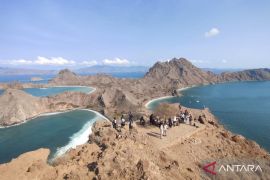"Observation satellites, of course, are very helpful. For example, after an earthquake, you can check whether settlements are still intact or completely damaged and find out where to send aid," Quenet said at a press conference here on Thursday.
She explained that the observation satellite or earth observer could rotate following the orbit pattern and return to its original position in 24 hours.
During the rotation, the observation satellite will capture images in optical, radar, and hot / cold temperatures in an area.
In relation to natural disaster mitigation, observation satellites can capture images in the same area for 24 hours. Therefore the images can provide the differences in the conditions of the place before and after the disaster.
During a disaster evacuation, observation satellites are needed to find out which areas are most in need of help, so that the amount of resources and assistance sent will be more effective.
Satellite images, especially with a resolution of up to 40 centimeters, can show road conditions, housing, and victims.
"For disaster recovery, we certainly need to see where the infrastructure is damaged, but on the other hand, the resources that are owned are limited. Therefore, details on where assistance is sent and which areas need assistance the most can be understood," she added.
Reporting by Mentari Dwi Gayati
Editing by Otniel Tamindael, Yoseph Hariyadi
Reporter: antara
Editor: Heru Purwanto
Copyright © ANTARA 2018












